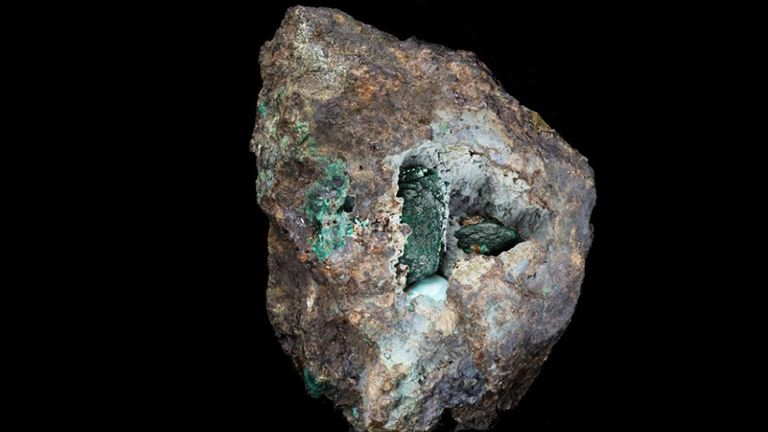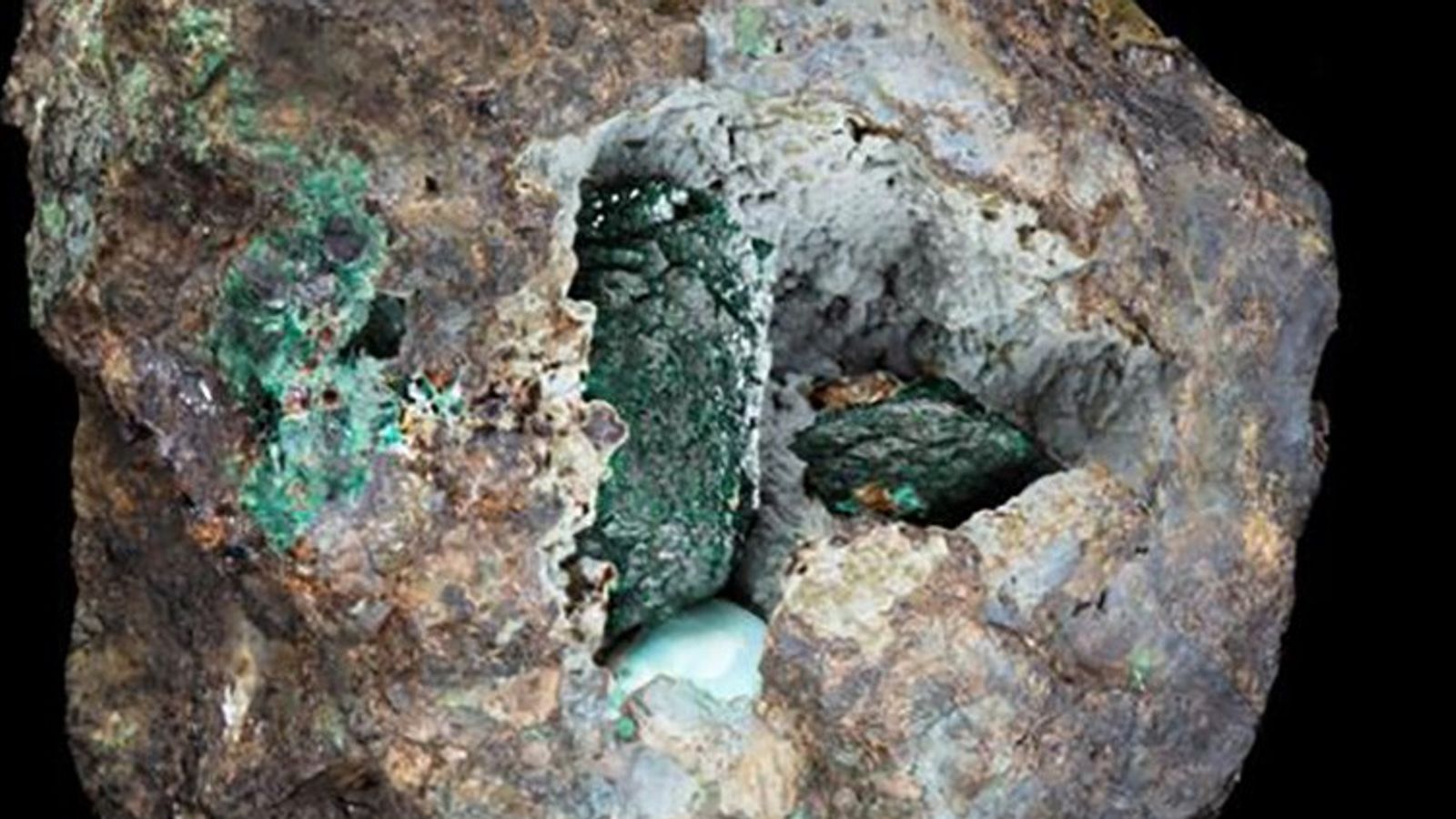A new dark green species of mineral has been discovered by scientists examining a rock which was mined in Cornwall around 220 years ago.
Kernowite, named after Kernow – the Cornish language word for the county – was found by a team at London’s Natural History Museum, led by Mike Rumsey.
The mineralogist said: “A lot of these discoveries happened over 100 years ago when the mines were still active.
“So the discovery of a new mineral from Cornwall, particularly one that related to the regions most famous mineral, is really quite amazing.”

The rock sample containing Kernowite was in the museum’s collection since 1964 but had been labelled as a loroconite mineral – a bright blue mineral also found in Cornwall.
The county is a world UNESCO heritage site – known around the world as a place where new minerals have been found.
Mr Rumsey made the discovery while analysing a rock taken from the Wheal Gorland mine located in St Day village.
The mine was used between 1790 and 1909 but has now been demolished and replaced with a housing estate.
Unless other samples are discovered elsewhere, the one example of Kernowite at the museum and another in a private collection are the only known examples of the mineral in the world.

Mrs Rumsey said: “There is nothing left. It’s an extinct locality, we can never go back.
“What we’ve got is a bit like a little time capsule.
“The fact that this sample was preserved in a museum means that we can do this kind of research because we’d never be able to go back and collect anymore.”
For hundreds of years, experts have thought green crystals were a variation of the liroconite mineral – but Mr Rumsey’s team found it has a different chemical makeup, and therefore can classify it as a different entity.
The museum’s principal curator of minerals continued: “Liroconite is this beautiful, gorgeous bright blue mineral that comes from Cornwall and I was trying to understand why its colour varies from bright teal-blue all the way to a dark emerald green.
“It turns out that the darkest green samples are sufficiently chemically different to the blue’s that we, as mineralogists, would define it as a new species.”
He also said: “It’s amazing that in 2020 we are adding a new mineral.”
Around 100 distinct minerals are discovered every year – and very rarely do they have large colourful crystals or are found in the UK.
